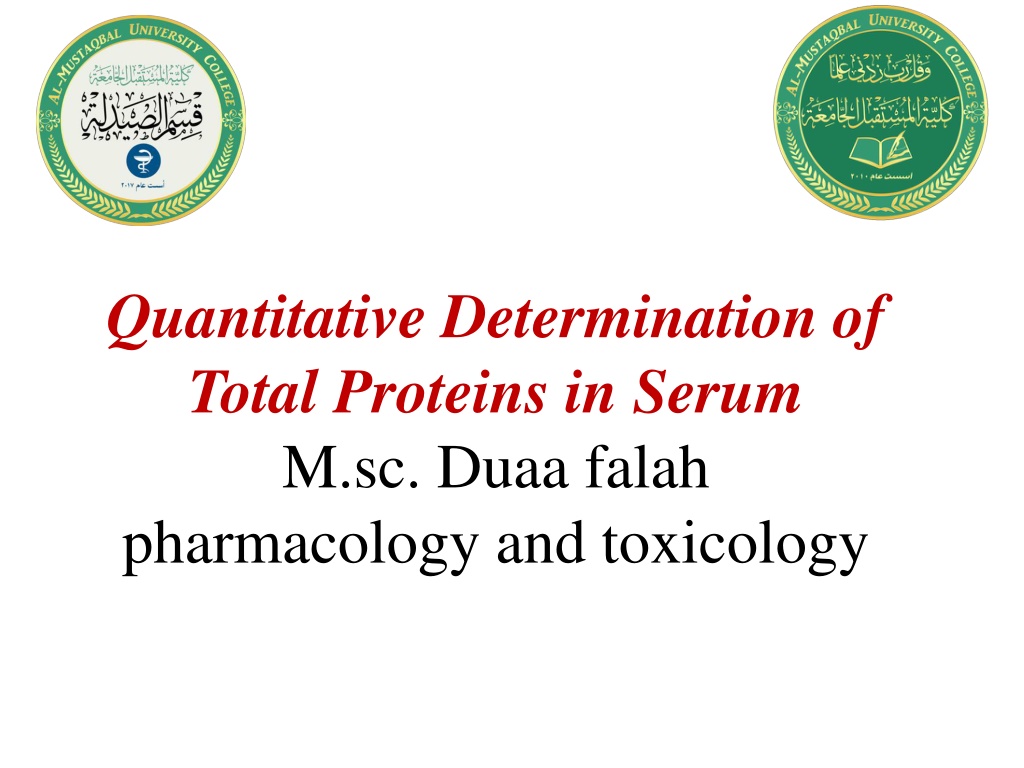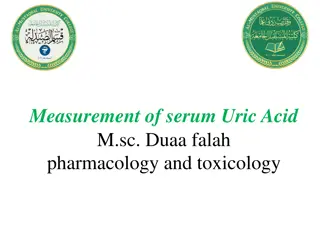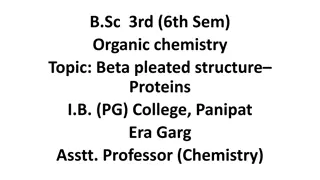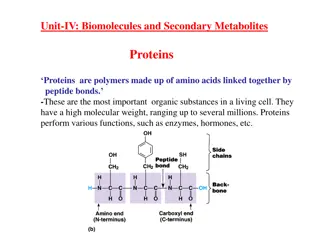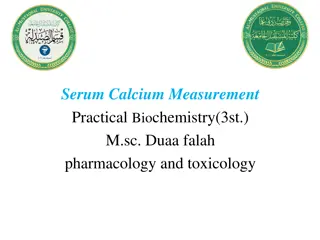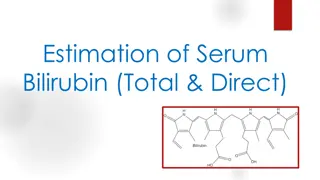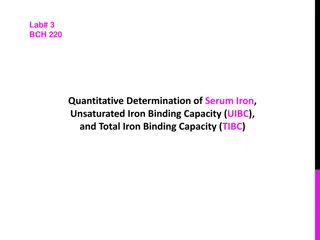Understanding Quantitative Determination of Total Proteins in Serum
Serum total protein testing is essential for measuring the total protein content in blood, consisting of albumin and globulins. This test evaluates body health by assessing the levels of these vital proteins, aiding in diagnosing various health conditions. Learn about the significance of total protein measurement, the two classes of proteins in the blood, testing methods, and normal protein level ranges.
Download Presentation

Please find below an Image/Link to download the presentation.
The content on the website is provided AS IS for your information and personal use only. It may not be sold, licensed, or shared on other websites without obtaining consent from the author. Download presentation by click this link. If you encounter any issues during the download, it is possible that the publisher has removed the file from their server.
E N D
Presentation Transcript
Quantitative Determination of Total Proteins in Serum M.sc. Duaa falah pharmacology and toxicology
protein protein are important building blocks of all cells and tissues. They are important for body growth, development, and health. They form the structural part of most organs and make up enzymes and hormones that regulate body functions. This test measures the amount of protein in your blood.
Two classes of proteins are found in the blood 1. Albumin: is made by the liver and makes up about 60% of the total protein. Albumin keeps fluid from leaking out of blood vessels, nourishes tissues, and transports hormones, vitamins, drugs, and substances like calcium throughout the body. 2. Globulins: make up the remaining 40% of proteins in the blood. The globulins are a varied group of proteins, some produced by the liver and some by the immune system. They help fight infection and transport nutrients.
Serum total protein also known as total protein, is a biochemical test for measuring the total amount of protein in serum. Protein in the serum is made up of albumin and globulin. The globulin in turn is made up of 1, 2, , and globulins. These fractions can be quantitated using protein electrophoresis, but the total protein test is a faster and cheaper test that estimates the total of all fractions together. The traditional method for measuring total protein uses the biuret reagent. other chemical methods such as Kjeldahl method, dye-binding and refractometry are now available. The measurement is usually analysers along with other laboratory tests. performed on automated
Test for protein can be performed on many different types of body fluids. Proteins are also measured in urine. The normal serum protein level : is 6 to 8 g/dl. Albumin makes up 3.5 to 5.0 g/dl, and the remainder isthe total globulins.These values may vary according to the individual laboratory. Usually, a person s body eliminates less than 150 milligrams (mg) of total protein and less than 20 mg of albumin through the urine every 24 hours.
Total protein methods are generally classified 1. The physical methods :include measurement of specific gravity, refractive index and absorbance of UV-light. 2. The chemical methods: are mostly modifications of the biuret reaction. Note: The biuret reaction is considered to be the method of choice for the clinical laboratory.
How is test used? 1. a comprehensive metabolic panel (CMP), to help evaluate your overall health status. 2. to help diagnose diseases and to monitor conditions or treatments. 3. Total protein levels can be affected by many different diseases and disorders: For example, a total protein test may be used to help diagnose kidney disease or as part of a liver panel to help detect liver disease
What do high protein levels mean? Consistently high serum total protein levels can indicate the following health conditions: 1. inflammation from infections, such as HIV or viral hepatitis 2. cancers, such as multiple myeloma 3. dehydration 4. chronic kidney disease 5. liver disease
What do Low protein levels mean? Kidney disorder Liver disorder Malnutrition Malabsorption :as celiac disease or inflamatory bowel diesaes (IBD).
Causes of Low Albumin/Globuline ratio overproduction of globulins, such as seen in multiple myeloma or autoimmune disease. Underproduction of albumin, such as may occur with cirrhosis. Selective loss of albumin from the circulation, as may occur with kidney disease ( nephrotic syndrome).
Causes High Albumin/Globuline ratio Underproduction of immunoglobulins as happens in some genetic deficiencies. Leukemias.
Specimen Collection A serum total protein test involves drawing a sample of blood from a vein located in the arm. A healthcare provider or phlebotomist will tie an elastic band around the upper arm to make the veins easier to find. After disinfecting the entry site, they will insert the needle into a vein. Blood from the vein will pass through the needle and into a collection tube.
Reagent 1-Sodium chloride 0.9% solution (Saline solution). 2-Stock Biuret reagent. Dissolve 45 g of Rochelle salt in about 400 ml of 0.2N NaOH and add 15 g of CuSO4, stirring continuously. Add 5 g of KI and make up to a liter with 0.2N NaOH. 3- Biuret solution for use. Dilute 200 ml of the stock reagent to a liter with 0.2N NaOH which contains 5 g of potassium iodide per lite. 4- standard protein solution (bovine albumin 6 to 7 g/dl)
Procedure 1. Mix well 2. Water bath (37 C) for 10 min. Violet color 3. Read at 540 nm. 4. The color of the final reaction mixture is stable for 1 hour
CALCULATIONS A Total Protein (g/dl) = ------ X Conc. of standard (g/dl) As A = absorbance of sample, As = absorbance of standard Example: 0.395 Total protein (g/dl) = ------- X 7.0 g/dl = 6.28 g/dl 0.440 - With A =0 .375, As =0.440, concentration of standard = 7.0 g/dl EXPECTED VALUES : 6.0 - 8.2 g/dl
